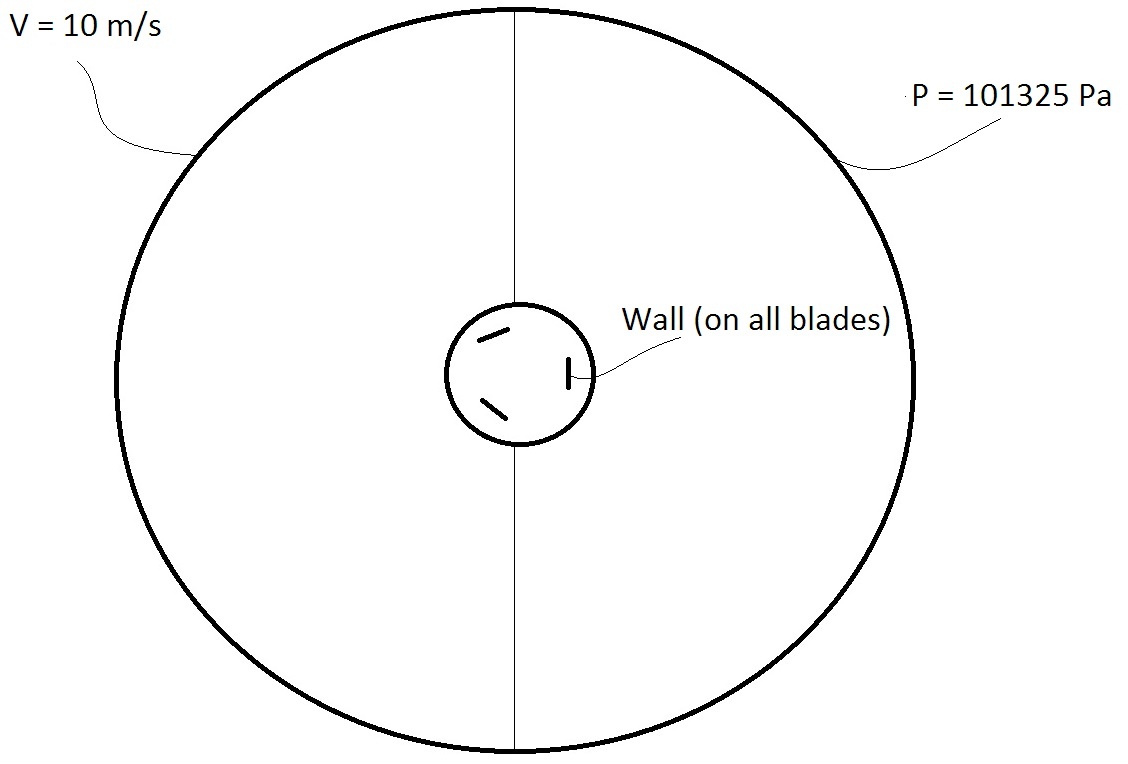In the Pre-Analysis step, we'll review the following:
The governing equations solved here are the conservation of mass and the conservation of momentum (Navier-Stokes equations), taken in a frame of reference moving with the turbine:


 and
and FLUENT will solve this in a moving frame of reference. This is a good simplification, because with it we don't have to deal with moving mesh. (yet! Keep checking for future tutorials on that!)
Note that we're solving a turbulent problem, and we will assume k-epsilon model with default FLUENT values
To solve in FLUENT we'll need to create a region a few times larger than the main geometry of the turbine. This region is where the presence of the turbine disturbs the flow. This can be seen as the outer circle from the following figure. Note that we could have made any geometry for this "far-field" zone, but to simplify the boundaries a circle was chosen.

The boundary conditions are:
FLUENT will follow the Finite-Volume Method and will divide the domain into multiple control volumes or "cells".
From the integral form of the governing equations, it will perform a control volume balance for each cell and write algebric nonlinear equations for them, and then linearize these equations..
Next, it will solve iteratively these equations and stop the iteration when the Residuals are below a certain specified tolerance.
Velocity, pressure, angular velocity and turbulence parameter k are calculated in the cell centers, after inverting the matrix of the system of algebric equations of cell-center values.
With these values, the post-process tool will derive everything else that we might want, like wall shear, etc.
Calculate Cp? need first to see if its possible to calculate that. Maybe from the torque....
We expect large vortices downstream the turbine?
Under Construction |
Start by opening Ansys workbench and dragging Fluid Flow (Fluent) into the project schematics.
Explain how to save the file, and how to make a single file.
Under Construction |
Go to all (ANSYS or FLUENT) Learning Modules